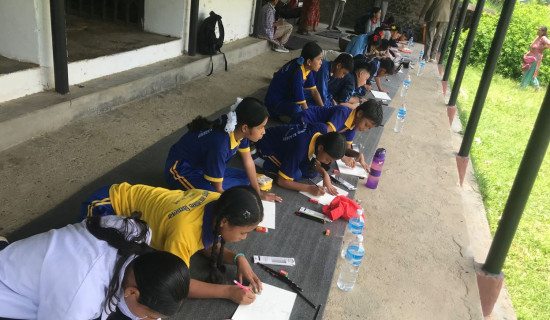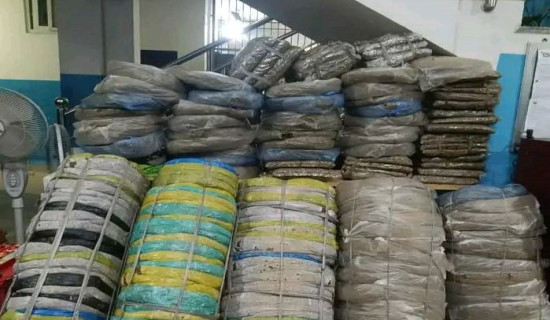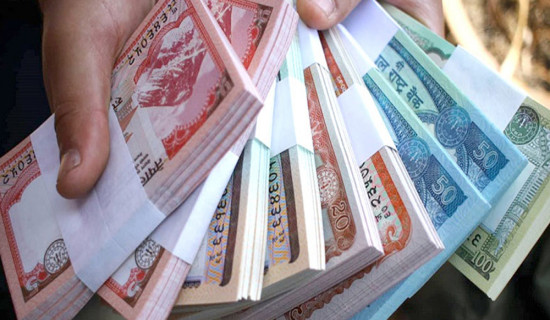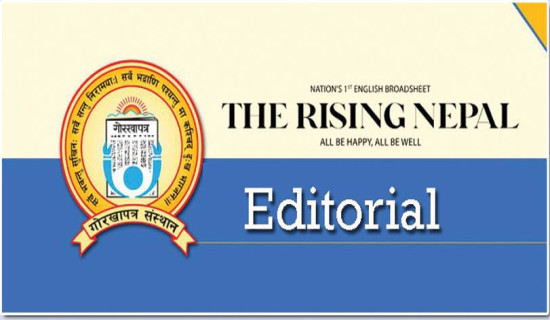- Tuesday, 16 September 2025
Shun Ostentation In Sohra Shradhdha
The word ‘Shradhdha’, which is derived from Sanskrit, means faith, purity and truth. In Hindu culture, parents are the first gurus-teachers and therefore are treated as Gods by their children. The children pay respects to their parents even after their death. Sons, especially the eldest sons, perform Shradhdha of their parents and in the process also remember three generations of their parents’ ancestors. Whether the sons actually respect their living parents and take care of their earthy needs or nit the rituals after death in the tradition of Shradhdha has been continued for centuries. Although the Hindu religion does not band women from performing Hindu religion rites, the patriarchal patronage has set a trend that sons perform this ritual.
It could also be associated with the fact that the sons have the automatic rights to their parents’ properties, whereas women have the rights to their husbands’ properties. In fact, the daughter has one gotra, according to the Hindu lineage of her father’s, but after marriage her gotra changes to that of her husband’s lineage. In Nepal, during Shradhdha, while giving tarpan-offerings to the ancestors, the man gives tarpan to three generations of his ancestors from his father’s side, tarpan to his maternal uncles and aunts, tarpan to his father’s sisters, and tarpan to his parents-in-laws who have died. If both parents have died, then Shardhdha is done one each for the mother and father on the tithi, the lunar date, they died on each year.
Lunar days
Then there is one more done for both of them together on the tithi of the father during Sohra Shradha also known as Pitri Pakhsha, which is a 16-lunar day period. During this period and during the yearly Shradhdha, the Hindus pay homage to their ancestors by offering food. According to the lunar calendar, there are 15 tihis - Pratipat, Ditiya, Tritiya, Chaturthi, Panchami, Shashti, Saptami, Ashtami, Navami, Dasami, Ekadasi, Dwadasi, Trayodasi, Chaturdashi and Amavasya (new moon). A person, who wants to perform this Pitri Tarpan or Shradhdha, should do it on the day of the death of his ancestor which falls within one of the fifteen tithis.
If for some reason they cannot perform it on the tithi of either of their parents’ death tithi, they can perform the ritual on the tithi of their grandfather or on the day of the new moon called Amawasya or Aunsi. Those growing up in Hindu cultures in Nepal remember the 16 days before Dashain when Sohra Shardha is observed. This is when the married daughters and their children are invited to their homes and they themselves are invited to the homes of their mother’s parents when Shradhdha is observed. It is a time when families get together and remember their dead ancestors. I remember my childhood days when these gatherings of siblings and cousins took place and where we had delicacies in memory of our parents and grandparents.
However, with nuclear families nowadays and with migration of children for education and work, there are very few people in family gatherings during Sohra Shradh or even during the regular Shradhdhs. The Pitri Paksha that is currently observed in Nepal and elsewhere among the Hindus falls in the Hindu lunar month of Bhadrapada (September-October) and begins with the full moon or Purnima that occurs immediately after Ganesh Chaturthi and ends with the new moon or Aunsi/Amavasya just before the Dasain festivals. According to the Hindu mythology, the souls of three preceding generations of one’s ancestors reside in the Pitri loka which is a realm between the earth and heaven governed by Yama the God of death. It is believed that when a person dies, the first generation shifts to heaven to unite with the Gods. Therefore, shradhdha offerings are given only to three generations who remain in the Pitri lok.
The Hindu mythology has a legend that Karna, the illegitimate son of Kunti in the Mahabharat epic, was a very generous person who donated a lot of gold and gems during his life. When he died and after his soul transcended to heaven, he was offered only gold and jewels for food. Karna who wanted real food asked Indra, the Lord of heaven, why he was offered gold and jewels. He was informed that he got what he donated throughout his life, but as he had never donated food to his ancestors during Shradhdha, he did not get any food now. Karna was unaware of his ancestors so he informed Indra that was the reason he never performed Shradhdha. To make amends Karna was allowed to descend back to earth and perform shradhdha and offer food and water to his ancestors for a 16-day-period. This period has since then been observed as Sohra Shraddha.
Changing culture
The Hindu scriptures like Garuda Purana, Agni Puran and Vayu Puran define the significance of Shradh. The Bhagwat Geeta mentions and includes prayers suitable for the Pitri Paksha. It is important to understand the legacies and reasons behind the whole process. As times move on, cultures and traditions get modified. Many people have now started doing mass shradhdha on the banks of the holy rivers such as the Bagmati, the Ganga and others. Also, many people, in the memory of their ancestors, have started donating to the homes of the elderly and feeding the residents at old age homes.
While observing the ongoing Pitri Paksha, it is very important to reflect on how the people nowadays treat their parents and grandparents. Performing extravagant rituals after the death of their parents and serving sumptuous meals and giving large sums of cash and food grains to the priests is not the right way of showing respect to the parents. It is very important to serve their parents well during their earthly lives and perform shradhdha in a modest way.
(Sharma is a senior journalist and women rights advocate namrata1964@yahoo.com Twitter handle: @NamrataSharmaP)
















